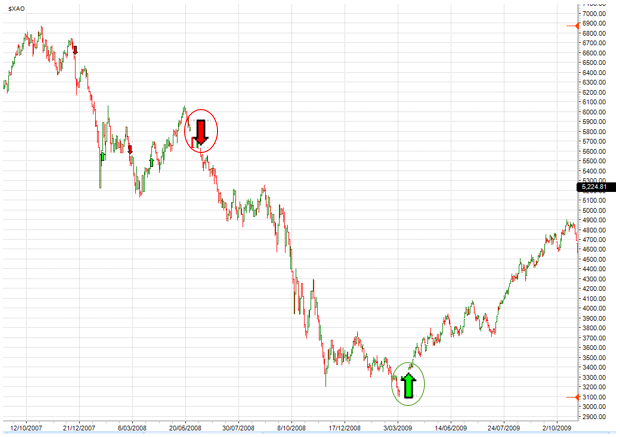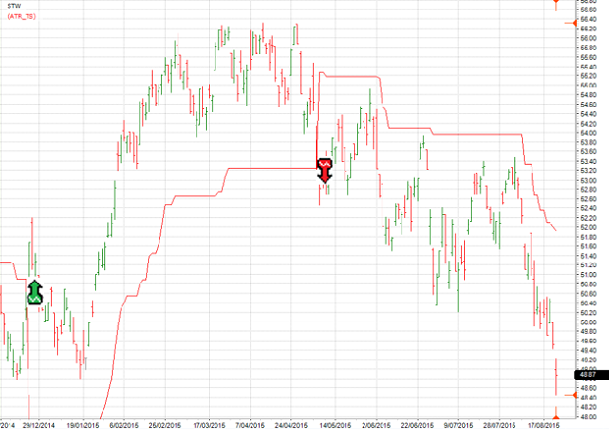Much of the educational message we deliver here at Share Wealth Systems focuses on the need to use a systematic approach to our trading and investing using a strict set of unambiguous signals to time our entry into and exit from the market.
During periods of extended upward momentum in the markets many investors tend to question the need to using market timing as bull markets have a tendency, like a rising tide, to lift all boats. These periods of market euphoria tend to play into the hands of those advocating a buy and hold approach over a buy, hold and sell, market timing approach.
When the market turns however, the buy and hold advocates either become extremely quiet or start wheeling out the old chestnuts of “being in it for the long term, it pays a great dividend, if I sell I have to pay tax, it’s a good stock” and a host of other well-oiled phrases to justify their position in stocks that are collapsing in line with the broader market.
The importance of market timing cannot be over-emphasised when actively managing a share portfolio. A well designed and researched system or methodology with a proven track record and clear buy and sell signals will help you achieve above average returns, help protect you financially from an extended bear market, and make a significant contribution to your emotional and psychological interaction with the market. No longer will you be stuck in down-trending stocks, watching helplessly as the market wipes away your precious capital.
Instead, you will have sold out of your open positions when signalled to do so by the system, and be sitting in cash whilst the market ‘correction’ takes hold. When signalled to do so by the system, at some point in the future when market conditions are once again conducive to re-invest, you can then re-invest your capital in the market. Once again participating in the market when conditions are deemed valid to do so by the systematic approach being used.
The chart below shows the XAO with the SPA3 ASX methodology for defining a low or high risk market. The green arrows represent a low risk market environment when the system defines we need to be 100% invested in stocks. The red arrows indicate a high risk market environment when the system defines we need to exit the market and move to 100% cash. Since its inception in January 2001, the publicly traded SPA3ASX portfolio has returned a compounded annual growth rate of 14.59%.
A positive difference of 6.95% over and above a buy and hold strategy of the All Ords Accumulation Index (XAOA) which has returned 7.64% over the same period, with dividends re-invested. With a starting capital of $100,000.00 this amounts to over $390,000.00 total return difference over this 14+ year period.

The chart below shows the performance of our SPA3ETF system applied to the STW ASX200 ETF. Once again, the green arrows are buy signals and the red arrows are the sell signals. Using this simple strategy has returned a compounded annual growth rate of 10.0% over the past 14 years, a 2.19% per annum better return than a buy and hold strategy of the ASX200 Accumulation Index over the same period of 7.81% to 24th August 2015 .
Just a 1% per annum better return compounded over a 20 year period makes a massive difference to your total return. With a starting capital of $200,000.00 this 1% equates to a difference in total return of over $230,000.00, without adding any additional capital. 2.19% difference compounded per annum over 20 years is a $445,465 better retirement!

There are many more examples I could include. We’ve shown that you can potentially do much better than just 1% over the accumulation index with the right mix of Shares or ETFs in your portfolio. And nearly every industry Super fund and active managed fund does worse than the accumulation index over 20 years so the difference to your retirement funds should be even bigger!
The point is, that the use of market timing using a proven strategy and executed according to the rules of the system, will achieve greater returns than a buy and hold strategy, and will also cause you significantly less stress and emotional and psychological discomfort from having to endure large market falls.


